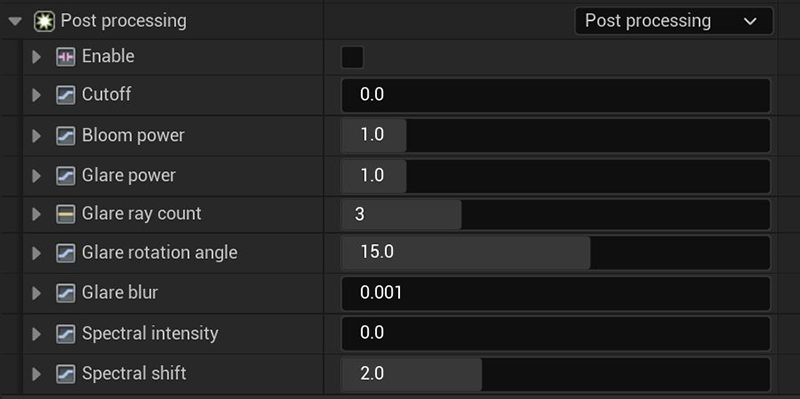
The post-processing effects provide various tools to enhance render results after OctaneRender® completes the rendering process. These effects are found in the Octane Render Target Actor, under the Post ProcessingEffects such as Bloom and Glare that are applied after a scene has been rendered. dropdown in the Details panel.

Figure 1: Accessing the Post Processing effects
Enable - Enables post-processing effects on the resulting render. Post-processing is disabled by default.
Cutoff - The pixel's minimum brightness to apply bloom and glare.
Bloom Power - Controls the size and intensity of the halo around the sun, light source, or reflective GlossyThe measure of how well light is reflected from a surface in the specular direction, the amount and way in which the light is spread around the specular direction, and the change in specular reflection as the specular angle changes. Used for shiny materials such as plastics or metals. materials.
Glare Power - Controls the size and intensity of the glare originating from reflective Glossy materials.
Glare Ray Amount - Controls the number of radiated or reflected visible rays.
Glare Rotation Angle - Adjusts the glare's rotation relative to the object. An value of -90 or 90 results to one main horizontal glare, and a value of 0 results to one main vertical glare.
Glare Blur - Controls the glare's sharpness. Smaller values result in a crisp linear glare, and this glare softens as the value gets higher.
Spectral Intensity - Adjusts the rays' intensity distribution across a source. This affects the radiant energy's brightness.
Spectral Shift - Adjusts the spectrum displacement as the frequency of light emitted from a source changes. The shift is evident by a color change, similar to the Doppler effect.